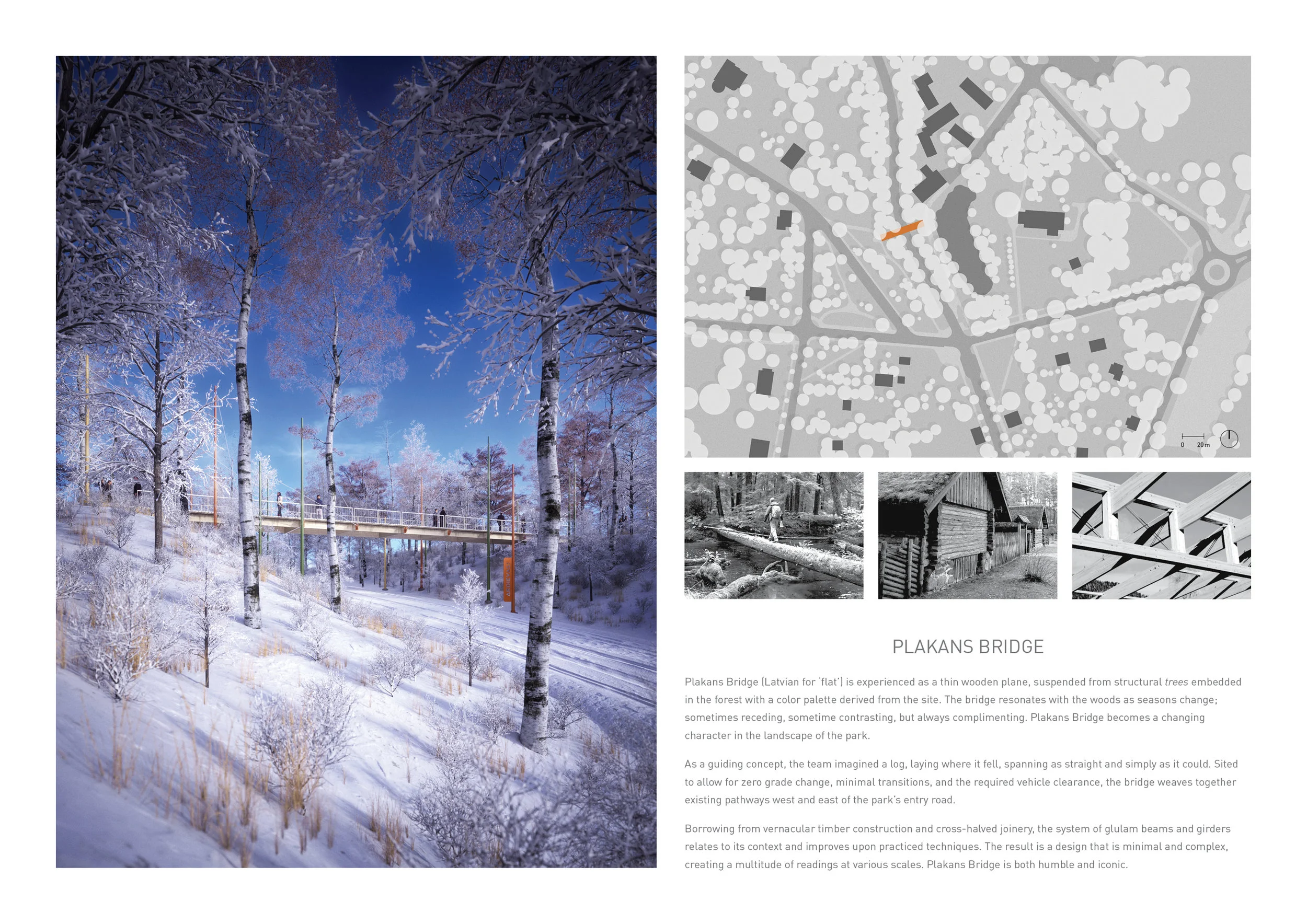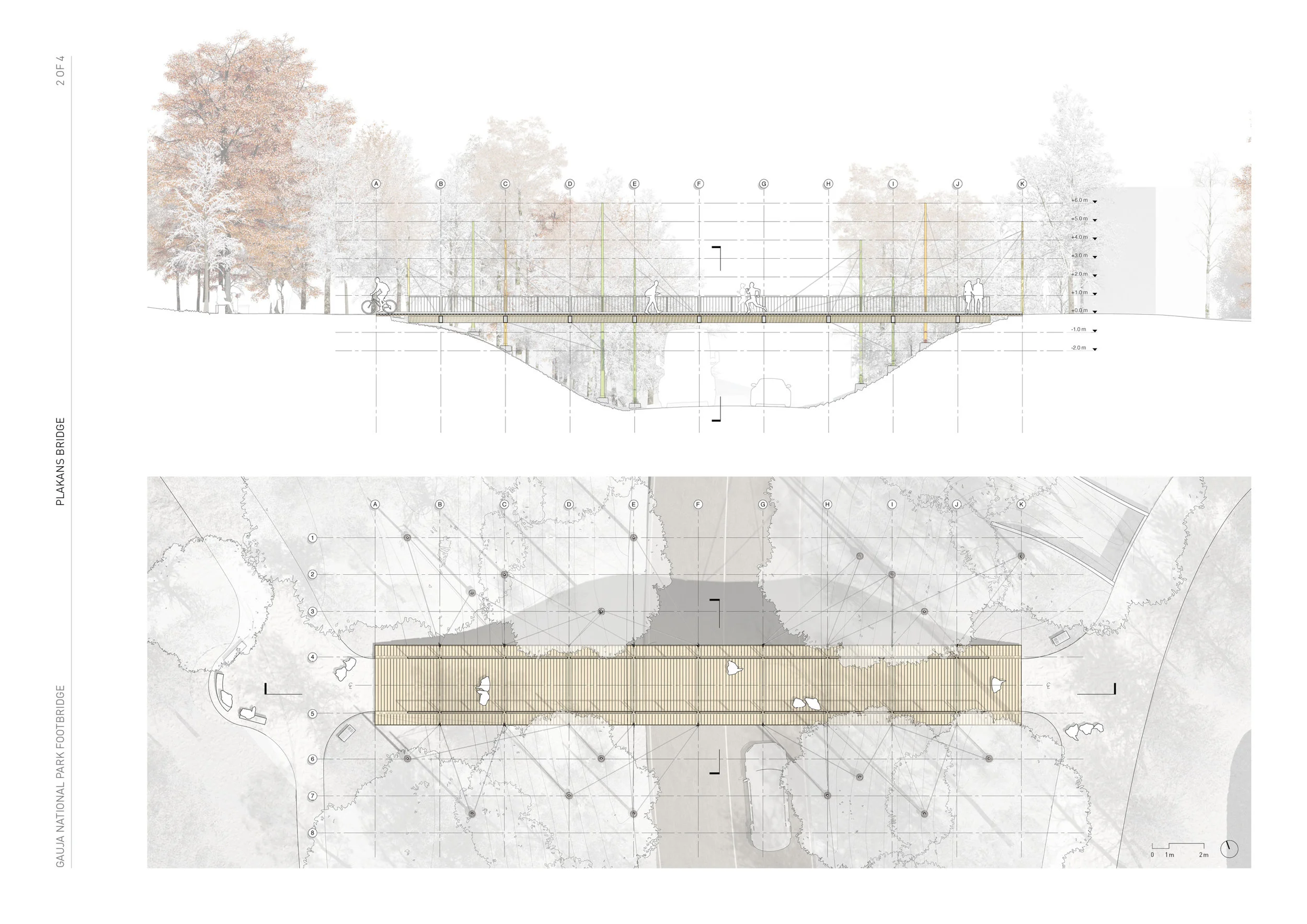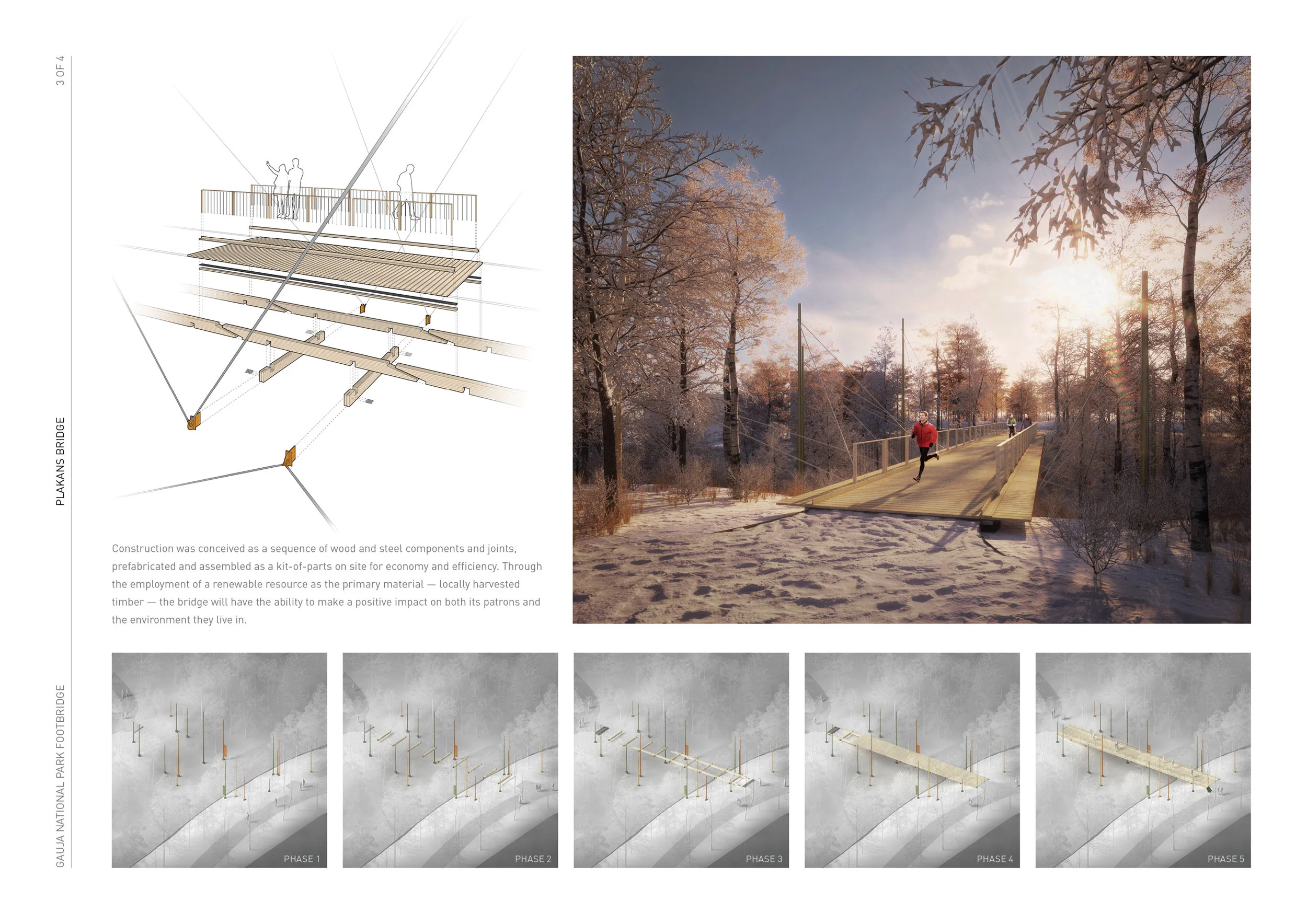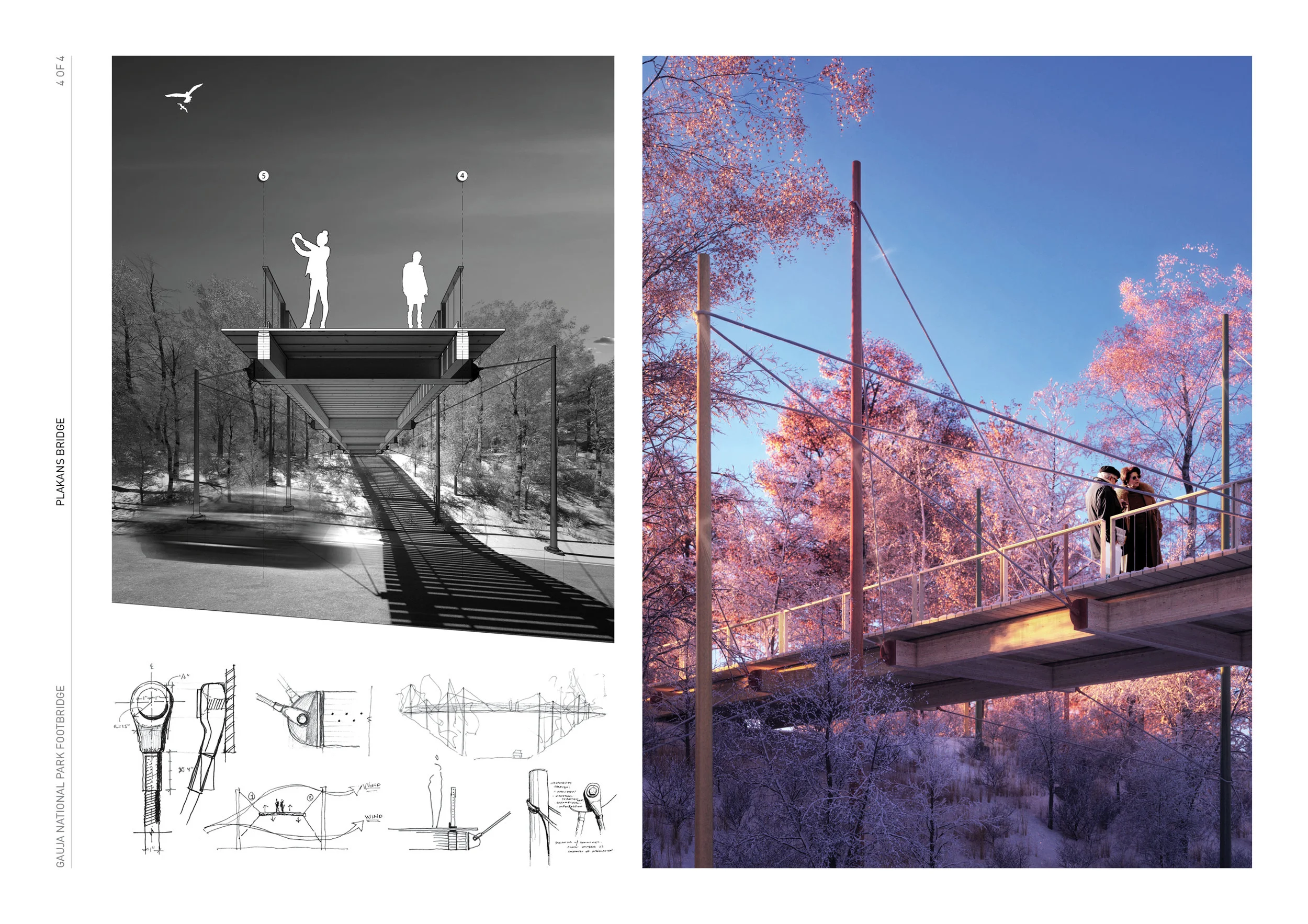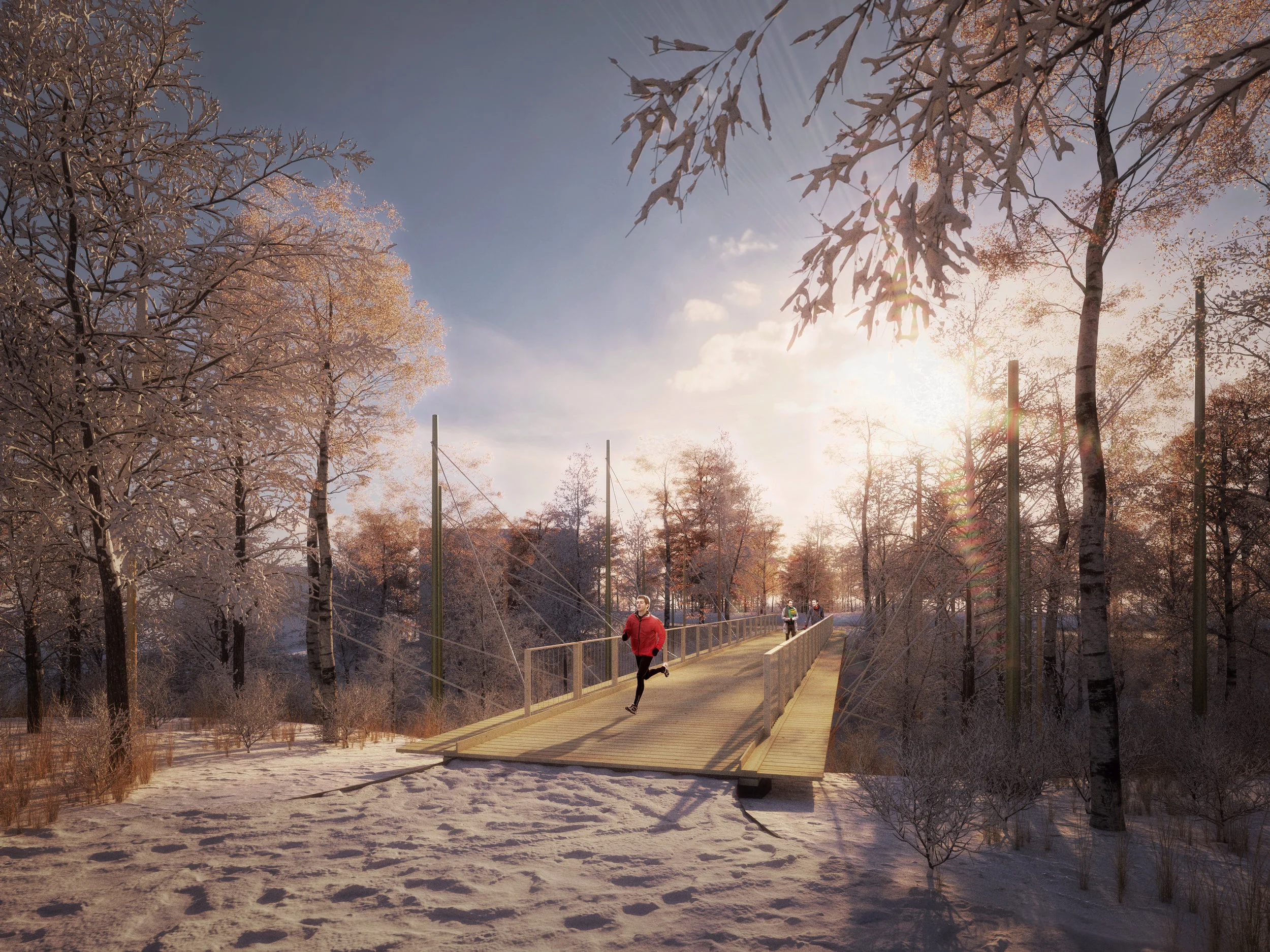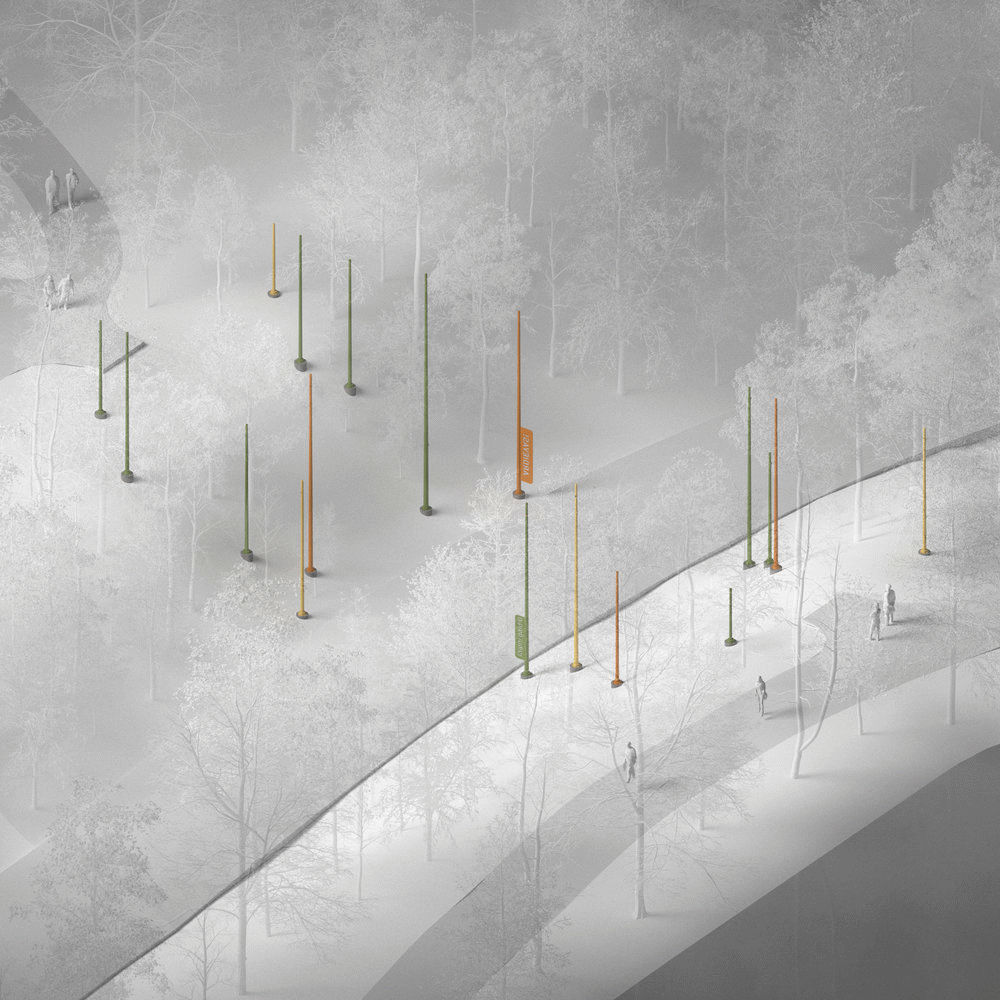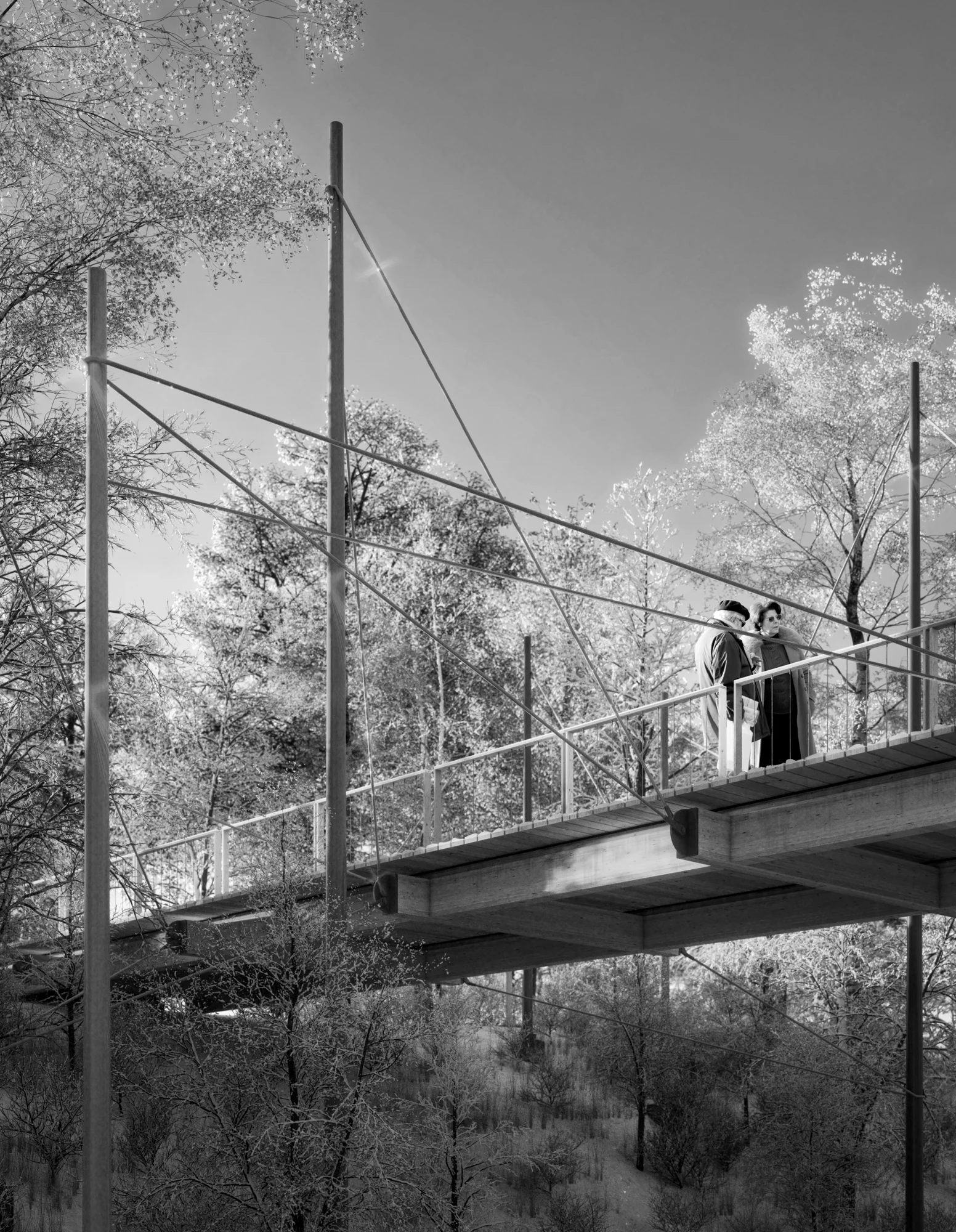Plakans Bridge (Latvian for ‘flat’) is experienced as a thin wooden plane, suspended from structural trees embedded in the forest with a color palette derived from the site. The bridge resonates with the woods as seasons change, sometimes receding, sometimes contrasting, but always complimenting. Plakans Bridge becomes a changing character in the landscape of the park.
As a guiding concept, the team imagined a log, laying where it fell, spanning as straight and simply as it could. Sited to allow for zero grade change, minimal transitions, and the required vehicle clearance, the bridge weaves together existing pathways west and east of the park’s entry road.
Borrowing from vernacular timber construction and cross-halved joinery, the system of glulam beams and girders related to its context and improves upon practiced techniques. The result is a design that is minimal and complex, creating a multitude of readings at various scales. Plakans Bridge is both humble and iconic.
Construction was conceived as a sequence of wood and steel components and joints, prefabricated and assembled as a kit-of-parts on site for economy and efficiency. Through the employment of a renewable resources as the primary material - locally harvested timber - the bridge will have the ability to make a positive impact on both its patrons and the environment they live in.
